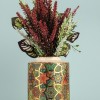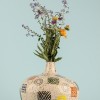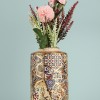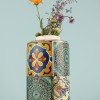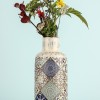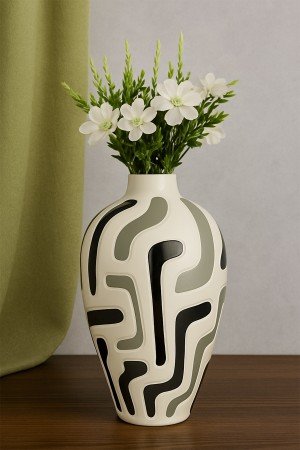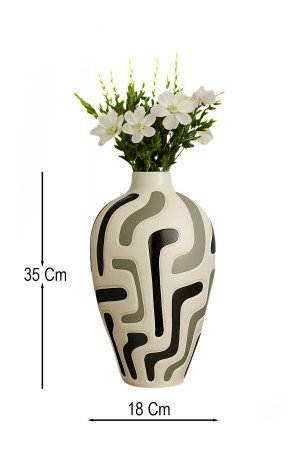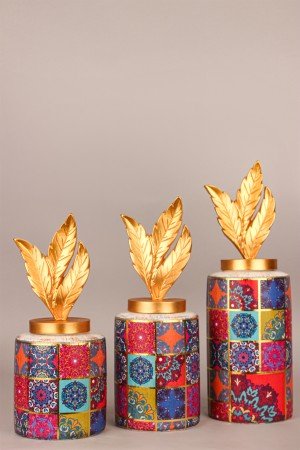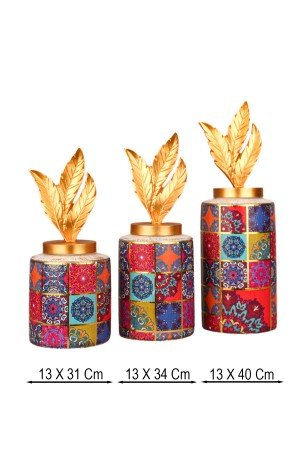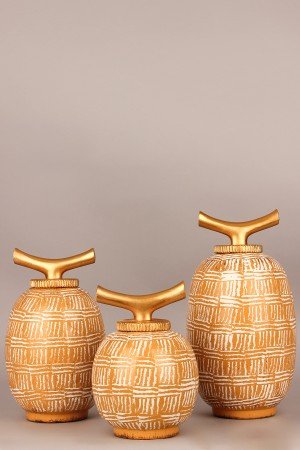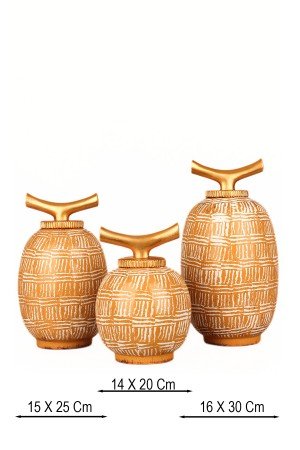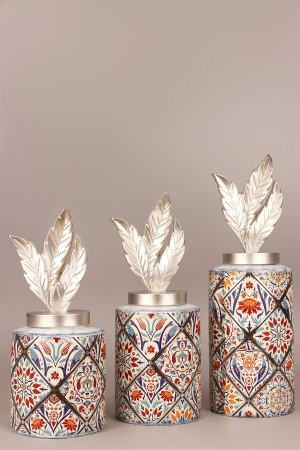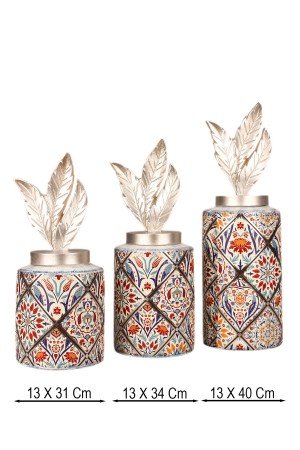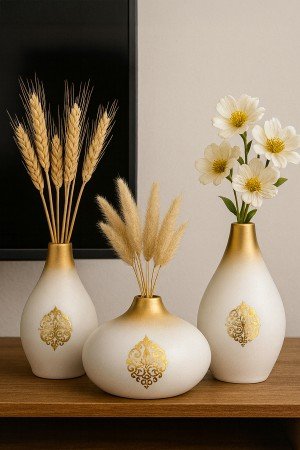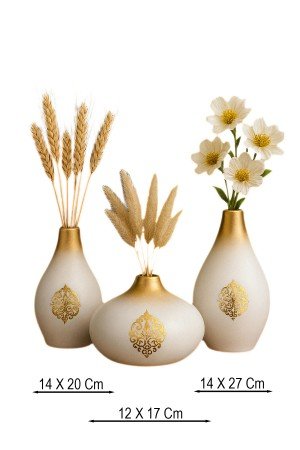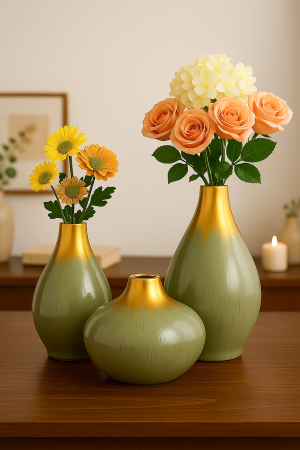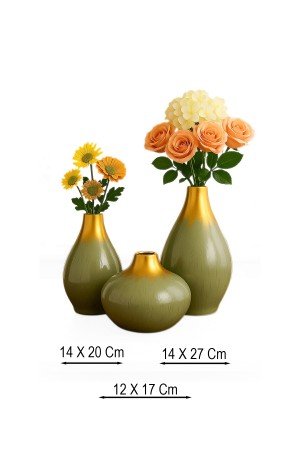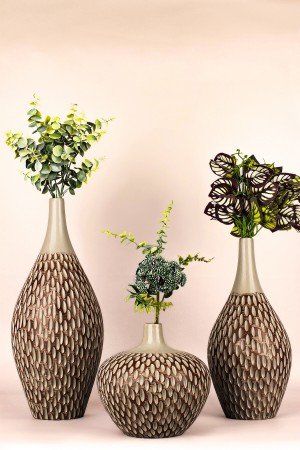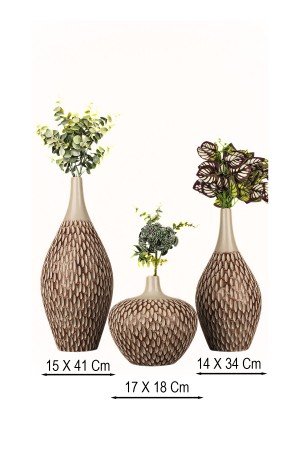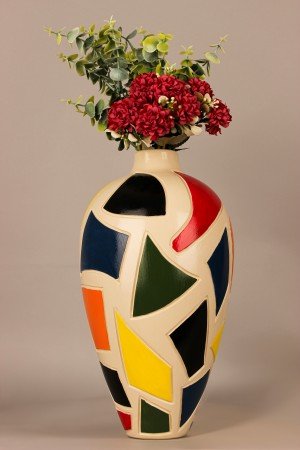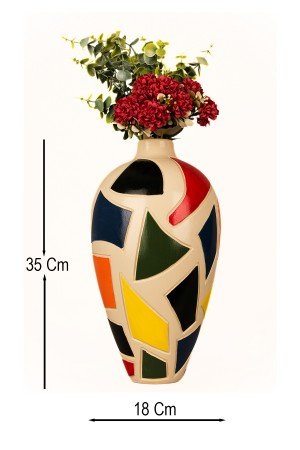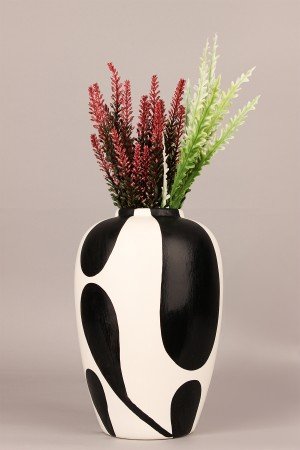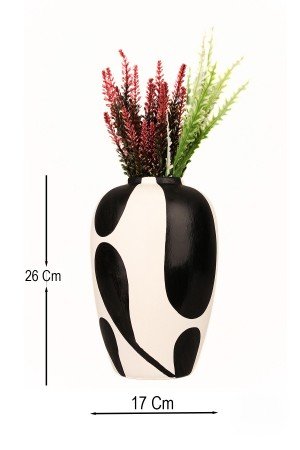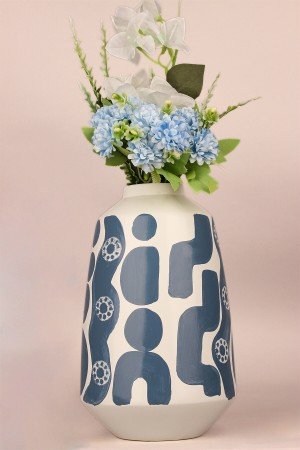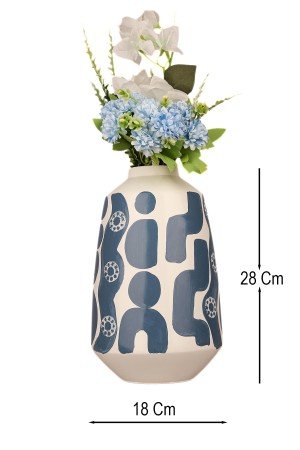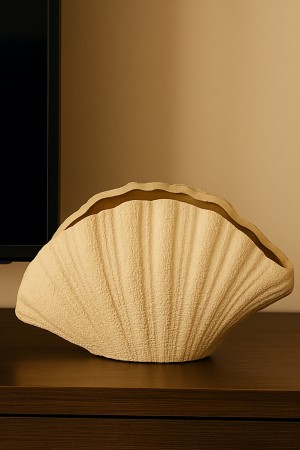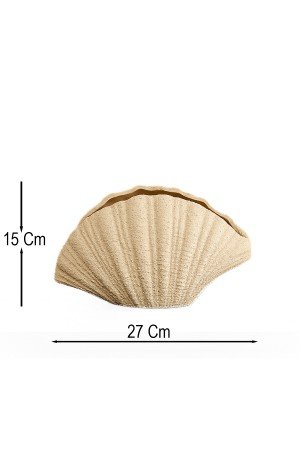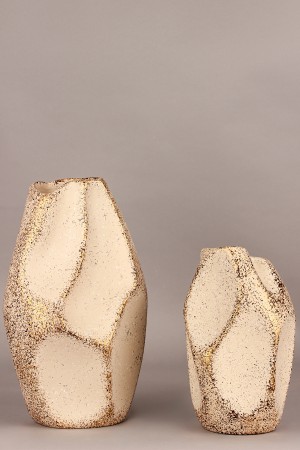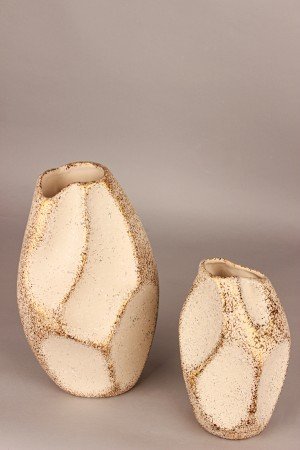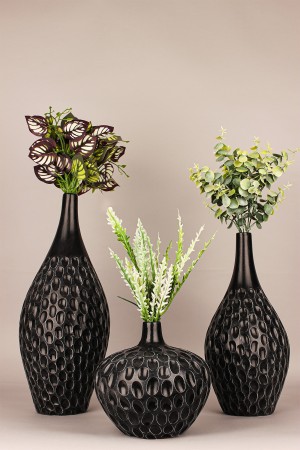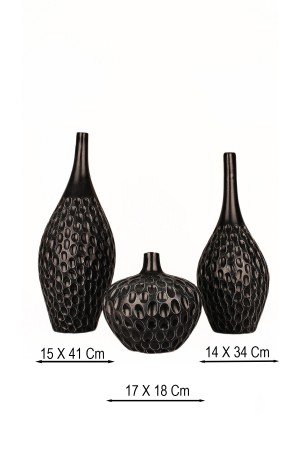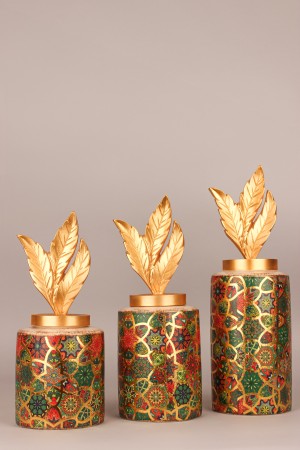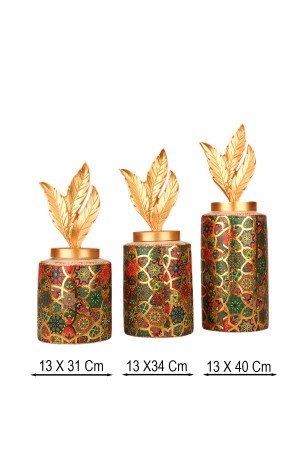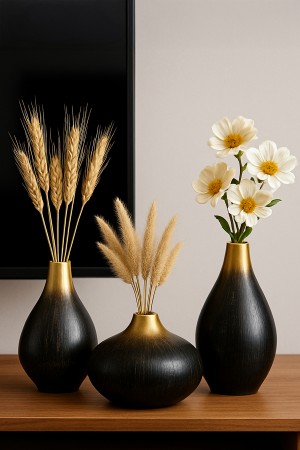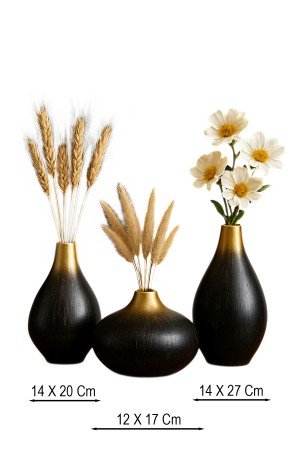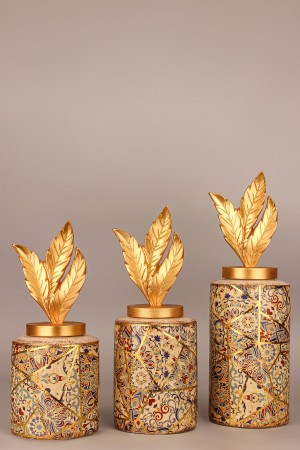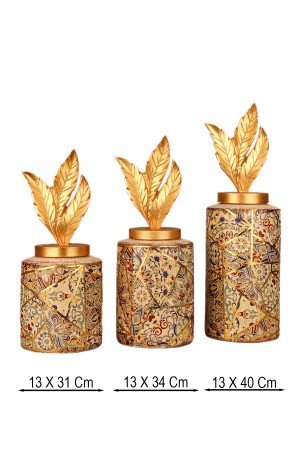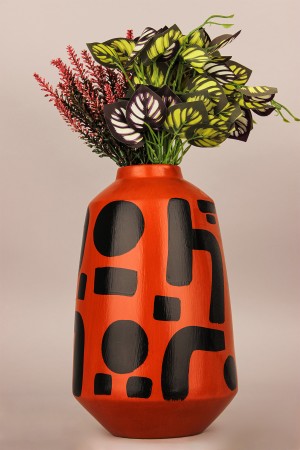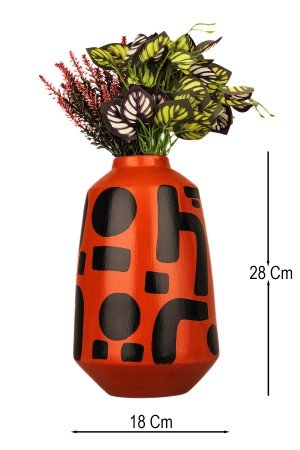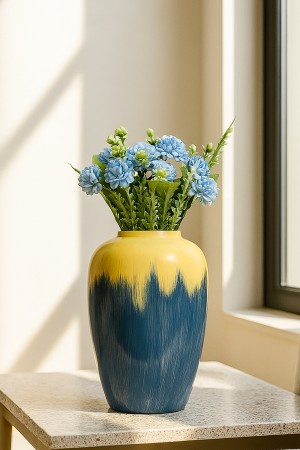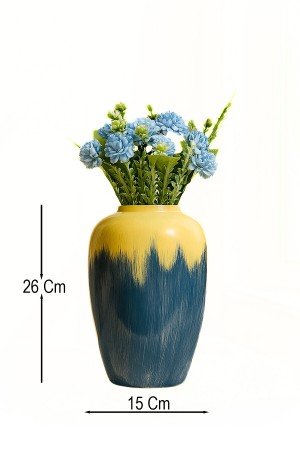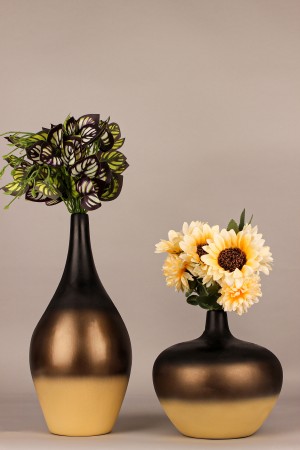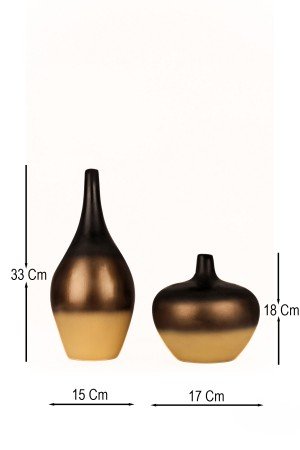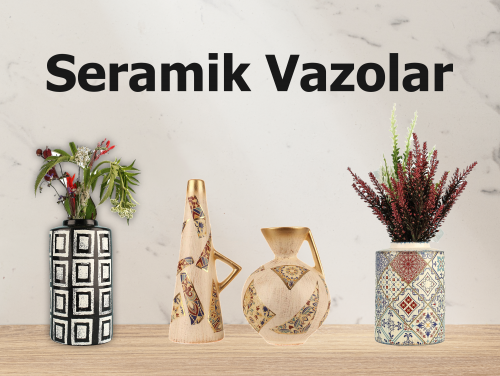
Ceramic Vases
Ceramic vases have been among the most popular products of the decoration and art world for centuries. Produced by shaping clay dough and firing it at high temperatures, these vases attract attention with their unique designs and details reflecting handcraftsmanship. Ceramic vases, which have found a place in a wide range of designs ranging from traditional motifs to modern designs in different cultures throughout history, are still among the indispensable elements of interior and exterior decoration today. In this guide, we will touch on many points from the production process of ceramic vases to material quality, from tips for use in decoration to maintenance recommendations, and we will explain what to look for when choosing these special pieces that will add value to your living spaces.
Properties and Production Process of Ceramic Vases
Ceramics are an extremely durable product group obtained by processing clay and similar natural materials. The production process includes many steps, starting from the design stage to firing and glazing processes. These stages determine the final appearance and durability of the ceramic vase.
- Preparation of Dough: The main material of ceramic vases is obtained by mixing certain proportions of clay, kaolin and natural minerals. The quality of the dough to be used is effective in the longevity of the product.
- Shaping and Molding: The dough, shaped by expert hands with a potter's lathe or molds, reveals the form of the vase. At this stage, hand workmanship is one of the most important factors that determine the character of the product.
- Drying Process: The shaped dough must be dried in a controlled manner. If drying is not done properly, cracks or deterioration in form may occur.
- First Firing (Biscuit Stage): The product fired for the first time at approximately 900-1000°C is called “biscuit”. At this stage, the internal structure of the ceramic hardens and becomes ready for glazing.
- Glazing and Painting: The biscuit-shaped vase is covered with a layer of glaze that provides protective and decorative features to its porous surface. Hand-painted details or relief motifs are also applied at this stage.
- Second Firing: The glazed vase is fired at higher temperatures (usually 1200-1300°C) to reach its final state. This stage makes the product more resistant to both water and external factors.
This production process ensures that ceramic vases are original and work of art. Sometimes models produced entirely by hand make it possible for each piece to be unique. Thanks to quality raw materials and meticulous firing stages, ceramic vases continue to be a part of the decoration for many years without losing their form or fading their colors when used correctly.
The Role of Ceramic Vase in Decoration
Among the vases with different materials and designs, ceramic models offer advantages in many ways. It is possible to find forms that reflect both rustic, classic and modern lines. Apart from this, the variety of colors and pattern details on them also allow you to personalize your decoration style.
- Stylish and Timeless Appearance: The natural texture and shiny glaze layer of ceramics add a luxurious touch to the product. Designed with minimal or flashy lines, ceramic vases easily adapt to the style and color palette of the space.
- Value of Craftsmanship: Models with hand-painted or embossed details are truly works of art. Ideal for those who want to own unique pieces.
- Color Variety: Thanks to glaze and painting techniques, it is possible to find many models in white, black, pastel or vibrant colors. This color variety offers an option that will adapt to the general atmosphere of the space or your personal tastes.
- Different Forms: Cylindrical, dome-shaped, square-cut or completely asymmetrical designs allow you to create different focal points in the space.
A ceramic vase is one of the eye-catching elements of decoration, even when empty. It is also possible to enliven the space by placing live flowers, artificial plants or dry branches inside the vase. The important thing is to make a choice that is compatible with the color and material balance in the space.
Ceramic Vase Types
Ceramic vases can be divided into many subcategories according to their size, design and function. You can choose between these models according to your needs, the width of the space and the decoration line:
- Desktop Ceramic Vases: They are usually small and medium sized models. They are placed on surfaces such as dining tables, coffee tables, office desks or consoles for decorative purposes. Simple forms create an elegant accent in minimal spaces.
- Floor Type Large Vases: Used in areas such as living rooms, entrances or large lobbies. Offering a showy stance, these vases are usually long, thin or wide-bodied. Depending on their shape, they can be displayed as dry branches, large flower arrangements or as a stand-alone art object.
- Wall Vases: Some ceramic models are designed to be hung on the wall. These types of vases save space in areas such as hallways or entrances and provide a stylish look.
- Vases in Sets: Produced in different sizes and forms with similar design lines, sets help you achieve a holistic decoration by being distributed together or to different corners of the space.
What to Consider When Making a Choice?
When buying a ceramic vase , you should take care to meet your expectations in terms of both aesthetics and functionality. Here are a few tips to make your decision easier:
- Space Size: A small vase may get lost in a large living room, while a giant vase may look cramped in a narrow space. You can achieve balance by choosing a model that fits the dimensions of the area where it will be used.
- Color Harmony: You can aim to create emphasis by choosing colors that are compatible or contrasting with the walls, furniture and other accessories. An extravagantly colored vase can be an eye-catching focal point in a simple decoration.
- Pattern and Processing: Decide whether you want hand-painted patterns, plain and single color or embossed surfaces. Each detail directly affects the style of the vase and its contribution to the space.
- Waterproof and Functional: If you want to place fresh flowers in it, it is very important that the vase is completely leak-proof. If you are going to use it for decorative purposes only, this feature becomes less critical.
- Budget and Quality: Specially designed or handcrafted models may be more expensive. You can increase your chances of being satisfied by investing in a product that is durable and complements your style in the long run.
Ceramic Vase Care and Cleaning
Ceramic is a material that can maintain its bright and vibrant appearance for many years with proper care. However, some points should be taken into consideration to avoid any deformation or discoloration:
- Regular Dusting: Dust can accumulate quickly, especially on embossed or patterned surfaces. Gently cleaning the surface with a soft dusting brush or cloth is sufficient.
- Warm Water and Mild Detergent: You can use warm water to clean the inside of the vase or to remove heavy stains. Avoid very strong chemicals; wash with gentle movements to prevent damage to the glazed surface.
- Protection Against Scratch: Be careful when placing on hard surfaces or moving the vase. Ceramic can be relatively sensitive to impact.
- Beware of Limescale Residues: If water is used, limescale residues may accumulate on the inner surface of the vase over time. It is possible to remove these residues with a soft brush and vinegar mixture.
- Sunlight Protection: Quality glaze is generally resistant to color fading, but slight tone changes may occur on items exposed to excessive sunlight for long periods.
Creative Touches with Ceramic Vases in Decoration
Ceramic vases add liveliness to the environment when used with colorful flower arrangements or exotic plants. However, you do not have to limit yourself to just plants; you can also evaluate different materials or objects.
- Dry Branches and Decorative Flowers: Dry branches or long artificial flowers that change according to the season create an aesthetic appearance, especially in high and narrow vases.
- Seashells and Beads: If you want to create a sea theme in your interior, you can add large and small seashells, colorful beads or sand into the vase. This concept is reflected more clearly in transparent glass or light-colored ceramics.
- Layered Grouping: You can create a holistic decoration area by placing several ceramic vases of different sizes side by side. This method is ideal for those who want to create an eye-catching corner in their living rooms.
- Minimal Approach: A single ceramic vase in a simple form, even if it is empty, can create the effect of a modern work of art. Especially in minimalist decoration, such a choice reveals the sophisticated side of the space.
Conclusion and Summary
Ceramic vases stand out as both an artistic and durable decorative element in terms of their production technique and material features. Various models with handcrafting or modern lines with mass production appeal to different tastes and budgets. Especially the richness of colors and patterns makes it possible for these vases to easily adapt to almost any space.
When choosing a ceramic vase , you should consider factors such as the dimensions of the space, your decoration style and the function of the product (flower placement, empty decorative object etc.). By being meticulous in maintenance and cleaning, you can preserve the shine of your vase for a long time and create a pleasant atmosphere in indoor and outdoor spaces. Ceramic vases, which are a strong design element even with dried plants, colorful flowers or just empty, offer a perfect option to add an artistic, timeless and elegant touch to your living spaces.



